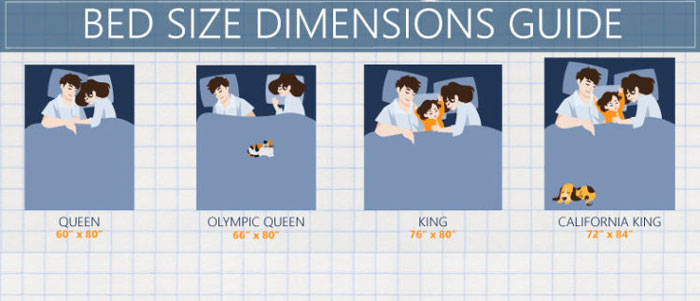Despite COVID and the resulting travel restrictions, we still look to other countries and societies for ideas and products for just about everything.
If there’s one thing we have in in common with any society, it’s that we all need sleep. But how we sleep and what we sleep on can vary a lot between countries and this can be a bit of problem for the uninformed buyer looking at international online bedding stores. Unfortunately, standard bed sizes around the world just don’t really seem to exist.
Here are just a few interesting things we’ve learnt about cultural differences in the sleep experience:
Single beds in Japan are very common. Visitors to Japan will notice the prevalence of twin single beds in hotel rooms. Apparently, this originates from the custom of sleeping on the traditional woven tatami mats with a futon on top. The mats approximate the size of a single bed. Supposedly, the mat and futon are good for posture and less disruptive for couples with differing work schedules, which is common in Japan.
On the other hand, we have super-sized beds in the US, in the big country of big vehicles, big meals and big everything. It’s the only place they could have invented the California King. But at 2.03 metres, it’s only a puppy when compared to the big dog - the Ace Size, at a whopping 3.65 metres. The extremes of US bed sizes could legitimately be considered a whole new category!
US beds tend to be higher than beds anywhere else, partly because of the construction of the bed, but also because mattresses are deeper. There’s just no regulated international mattress sizes either. If you buy a USA-made bed and bring it to New Zealand, you may just find that New Zealand sheet sizes simply don’t fit.
In Scandinavia, the Northern Europeans have not only ditched the top sheet, they sleep with twin duvets. It makes sleeping easier for a couple because each person has a duvet to fit their individual temperature and there is no tussling for the covers when they have their own duvet. It’s a no-brainer.
Aside from the top cover, another difference between Northern Europeans and the southern folk is that Europeans prefer to pair up two single beds instead of our double bed arrangement.
Meanwhile in Germany, rectangular pillows as we know them don’t seem to exist. The general standard is a European pillow, which is either folded in half and squashed into a rectangular pillow case or covered with a square pillow case. For those of us used to rectangular pillows, the square option is a bit of a conundrum.
And then we get to the inconsistent use of terminology in this ‘Standard International Bed sizes’ chart which, unsurprisingly, does not include any unique sizing options. Note the variety of sizes and the corresponding description:
|
Size |
AUS |
NZ |
UK |
USA |
|
75 x 190cm |
- |
- |
Small Single |
- |
|
75 x 200cm |
- |
- |
Small Single/ |
- |
|
80 x 190cm |
- |
- |
Custom Size |
- |
|
80 x 200cm |
- |
- |
Custom Size |
- |
|
91 x 187cm |
Single |
Single |
Single |
Single |
|
90 x 200cm |
- |
Long Single |
Long Single |
Long Single |
|
90 x 210cm |
- |
- |
Extra Long Single |
- |
|
100 x 200cm |
King Single |
King Single |
Large Single |
- |
|
120 x 190cm |
- |
- |
Small Double |
- |
|
120 x 200cm |
- |
- |
Small Double Long |
Twin Extra |
|
137 x 190cm |
Double |
Double |
Double |
Double |
|
137 x 200cm |
- |
Double Long |
Double |
Double Extra |
|
153 x 203cm |
Queen |
Queen |
King |
Queen Size |
|
160 x 200cm |
- |
- |
Euro King |
- |
|
167 x 203cm |
King Size |
King Size |
- |
- |
|
183 x 203cm |
Super King |
Super King |
Super King |
King Size |
|
203 x 203cm |
Californian King |
Californian King |
Emperor |
Californian King |
The moral of the story is, be careful if you buy from international bedding websites, as the sizing can be confusing. Standard bed sizes around the world don’t really exist and neither are there consistent sheet sizes around the world.
Our advice? Do your homework carefully or buy local! See our range of lyocell cotton sheets.

